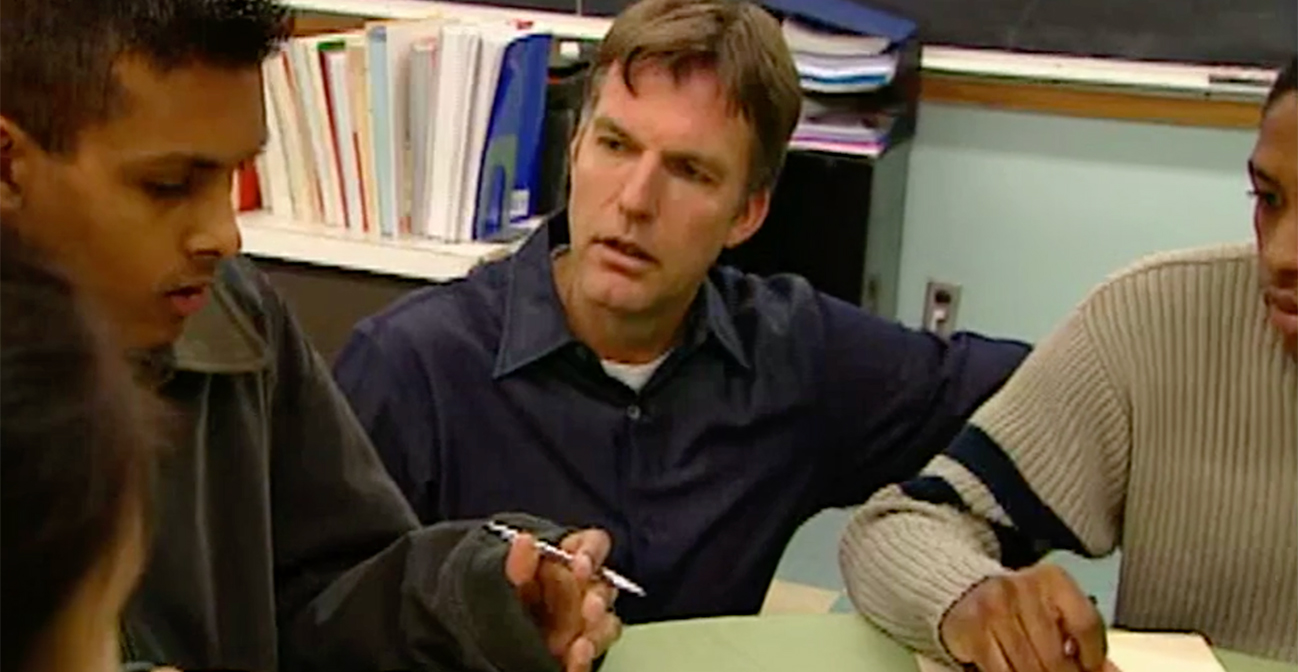Join us for conversations that inspire, recognize, and encourage innovation and best practices in the education profession.
Available on Apple Podcasts, Spotify, Google Podcasts, and more.

CLASSROOM AT A GLANCE
Teacher
Stephanie Appel
Language
French
Grades
2
School
Radburn Elementary School, Fair Lawn, New Jersey
Lesson Date
March 8
Class Size
23
Schedule
30 minutes, two times per week
In this lesson, students practice vocabulary for the continents and oceans. They begin by reviewing vocabulary for the solar system, then narrow their focus to planet Earth. Finally, as a class and in pairs, students practice the continents and oceans vocabulary using Total Physical Response and maps.
Communication: Interpersonal, Interpretive
Connections: Making Connections
Foreign Language in the Elementary School (FLES)
This elementary school model organizes instruction around a scope and sequence taught by a qualified foreign language teacher. Its goals include developing language proficiency with an emphasis on oral skills, as well as providing a gradual introduction to literacy, building cultural knowledge, and tying language learning to the content of the early grades’ curriculum. FLES programs vary, especially in the number of meetings per week or minutes per session. See also Foreign Language Exploratory Program (FLEX).
Total Physical Response (TPR)
Developed by Asher, Kusudo, and de la Torre (1974), TPR is an approach for teaching vocabulary that appeals to learners’ kinesthetic-sensory system. First, the teacher introduces new vocabulary words and establishes their meaning through corresponding actions and gestures. Students mimic the teacher’s actions as they learn the words, and eventually demonstrate comprehension through the actions and gestures. Ultimately, the language is extended to written forms, and students begin to respond verbally. Research evidence attests to the effectiveness of TPR for learning and retaining vocabulary. See also Total Physical Response Storytelling (TPRS).
Reflect on Your Practice
As you reflect on these questions, write down your responses or discuss them as a group.
Watch Other Videos
Watch other videos in the Teaching Foreign Languages K–12 library for more examples of teaching methodologies like those you’ve just seen. Note: All videos in this series are subtitled in English.
Put It Into Practice
Try these ideas in your classroom. Where it’s not already evident, reflect on how to adapt an idea that targets one performance range for application to other performance ranges.
World-Readiness Standards for Learning Languages
The World-Readiness Standards for Learning Languages create a roadmap to guide learners to develop competence to communicate effectively and interact with cultural understanding. This lesson correlates to the following Standards:
Interpersonal Communication
Interpretive Communication
Learners understand, interpret, and analyze what is heard, read, or viewed on a variety of topics.
Making Connections
Lesson Materials
Am Stram Gram (PDF, 12 K)
Lyrics to a traditional French rhyme used in the lesson
Curriculum References
New Jersey World Languages Curriculum Framework